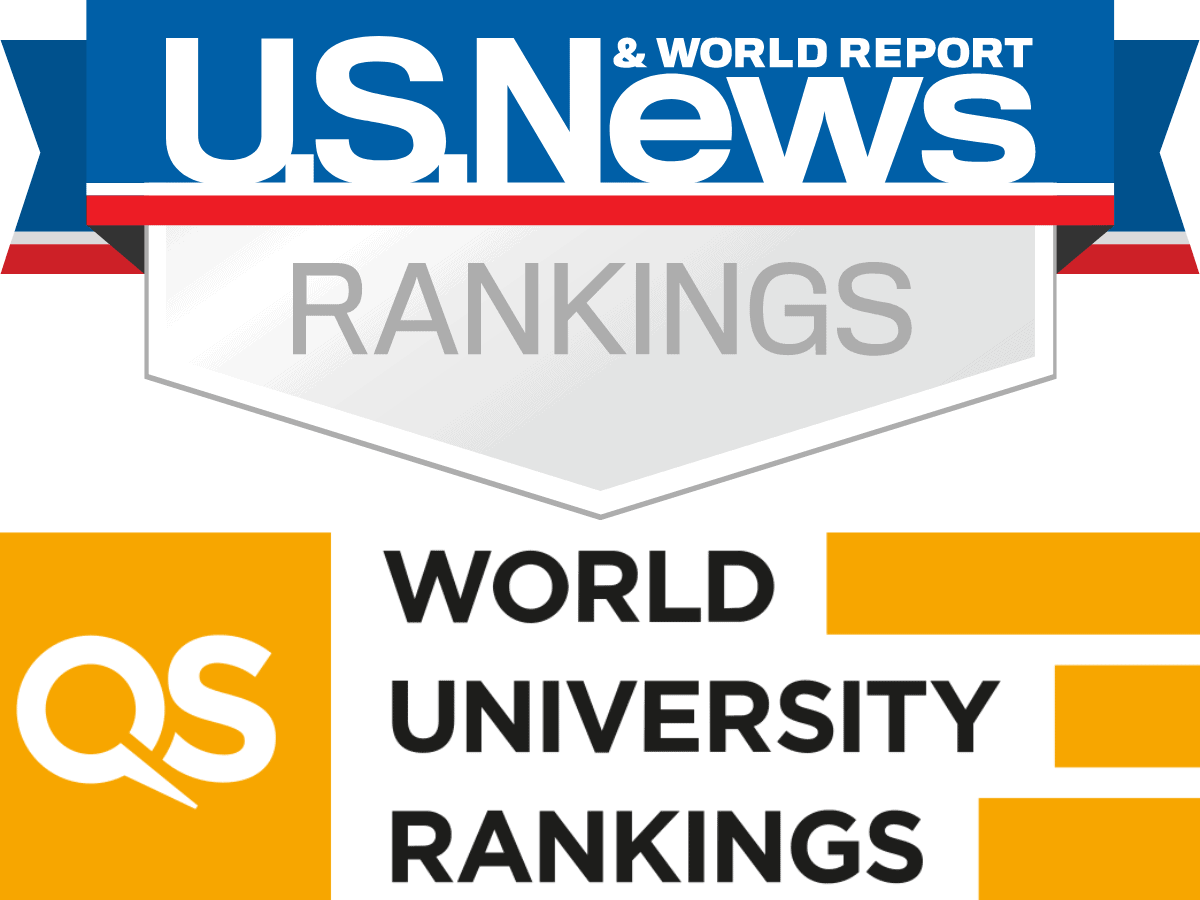US News Ranking vs. QS Ranking: Which One Comes Out on Top?
There’s no denying that US News is one of the most popular and trusted college ranking sites out there. Every year, it comes up with 10 distinct rankings according to academic mission.
And one of those is Best Global Universities — as of this writing, Harvard University is leading the list.
And speaking of global institutions, there’s another well-known college ranking site that dishes out rankings of the best universities on the planet every year: QS World University Rankings.
Massachusetts Institute of Technology — it’s currently the one at the top of the said ranker’s list.
MIT is #2 in Best Global Universities 2022 to 2023 by US News. On the other hand, the current champion on the said ranking, which is Harvard, is #5 in QS World University Rankings 2023 by QS.
Both college ranking sites that rank global institutions every year, however, agree that Stanford University is worthy of a #3 rank.
US News, which started to launch a series of signature college rankings in 1983, made college ranking a popular and helpful tool for students who want nothing but the best higher education experience and degree.
It actually started out having a format pioneered by Time magazine — US News was originally a weekly magazine launched in 1933.
Many sites that rank college rankers agree that US News is the best college ranker and college search site, too.
The QS in QS World University Ranking stands for Quacquarelli Symonds. In the past, QS collaborated with Times Higher Education (THE).
In 2009, however, THE decided to partner with Thomson Reuters instead and produce its own college rankings. QS Ranking retained the methodology used and then THE had to come up with its own.
Planning on becoming an international student after graduating from high school and wondering, too, which between US News and QS Ranking you should use as a guide when building your college list?
Don’t stop reading now!
In this post, we will talk about the different ranking factors used by both US News and QS, thus allowing you to learn how each of them comes up with their respective rankings of the top international universities.
By getting acquainted with their methodologies, you can have a much better idea of which of these college ranking sites can help you more in your quest to find the right global school for you to attend.

Factors Used in Ranking Best Global Colleges
There are different ranking factors considered by US News and QS World University Rankings when ranking international schools. Each factor used has a different weight, too. Between the two, the methodology US News uses involves far more key ranking factors than that by QS Ranking — 13 vs. 5 factors.
It’s very much likely for you to come across the very same colleges and universities when checking out the entire rankings for best global schools by both US News and QS Ranking.
After all, the entire planet can only offer as many top-notch institutions for international students.
However, you can be certain that the vast majority of them are taking up different spots in each ranking, with very few exceptions that are given the same ranking by US News and QS alike. But the minute you check out the different ranking factors used by each one, you will realize that it’s nothing more than a mere coincidence.
The table below shows an assortment of ranking factors commonly used by college ranking sites. It also indicates which of them are used by which college ranker (US News and QS) as well as the respective weight of each:
| RANKING FACTORS | US NEWS | QS RANKING |
|---|---|---|
| Academics | – | 40% |
| Books | 2.50% | – |
| Citations per faculty | – | 20% |
| Cited papers (top 1%) | 5% | – |
| Conferences | 2.50% | – |
| Employer reputation | – | 10% |
| Faculty | – | 20% |
| Global research reputation | 12.50% | – |
| International collaboration | 5% | – |
| Internal collaboration (relative to country) | 5% | – |
| International faculty/student ratio | – | 10% |
| Normalized citation impact | 10% | – |
| Number of publications cited (top 10%) | 12.50% | – |
| Percentage of publications cited (top 10%) | 10% | – |
| Percentage of publications cited (top 1%) | 5% | – |
| Publications | 10% | – |
| Regional research reputation | 12.50% | – |
| Total citations | 7.50% | – |
Based on the table above, it’s apparent that US News uses more primary factors by a substantial amount when ranking international colleges and universities than QS World University Rankings.
Even though both rankers have a ranking factor in common (faculty) with the same weight, too, there are different sub-factors considered by each one.
By using different ranking factors and a different weight for each, it’s inevitable for one global school to have a particular spot on US News ranking and an entirely different spot on QS.
This is when the importance of choosing which between the two college rankers you should trust more.
In order to have a much better idea of what I’m talking about, check the table below — it compares the top 20 institutions of higher education on the entire planet.
The ranking by US News is called Best Global Universities, while the ranking by QS Rankings is called QS World University Rankings.
| RANKING | BEST GLOBAL UNIVERSITIES | QS WORLD UNIVERSITY RANKINGS |
|---|---|---|
| #1 | Harvard University | Massachusetts Institute of Technology |
| #2 | Massachusetts Institute of Technology | University of Cambridge |
| #3 | Stanford University | Stanford University |
| #4 | University of California, Berkeley | University of Oxford |
| #5 | University of Oxford | Harvard University |
| #6 | University of Washington, Seattle | California Institute of Technology |
| #7 | Columbia University | Imperial College London |
| #8 | University of Cambridge | University College London |
| #9 | California Institute of Technology | ETH Zurich |
| #10 | Johns Hopkins University | University of Chicago |
| #11 | Yale University | National University of Singapore |
| #12 | University College London | Peking University |
| #13 | Imperial College London | University of Pennsylvania |
| #14 | University of California Los Angeles | Tsinghua University |
| #15 | University of Pennsylvania | University of Edinburgh |
| #16 | Princeton University | EPFL |
| #17 | University of California San Francisco | Princeton University |
| #18 | University of Toronto | Yale University |
| #19 | University of Michigan | Nanyang Technological University |
| #20 | University of California, San Diego | Cornell University |
Ranking Factors Used by US News
When ranking US colleges and universities, typically, US News takes into account 9 distinct factors. Ranking international institutions of higher education, however, changes the game — the popular college ranking site considers 13 different factors, with research- and publication-related ones having the most weight.
It’s simple to look at the Best Global Universities 2022 to 2023 ranking by US News. Needless to say, the school that appears on top of the other is better.
However, when you consider the methodology used, you will realize that it’s a complicated matter.
That’s because there are 13 ranking factors that go into ranking international colleges and universities each year. If you are someone who is very particular about the many different aspects of the school you’re planning on attending, then you may find the methodology used by US News to be thorough and meticulous.
For the Best Global Universities 2022 to 2023 ranking, US News ranked a total of 2,011 colleges and universities in and outside of the US. However, the trusted college ranking site’s ranking goes from #1 to #2,000 only, although it’s important to keep in mind that ties were allowed.
In determining which schools around the globe to add to its ranking, US News obtained information from an analytics company, which I will mention later on in passing.
Invitation-only survey sheets were also handed out to respondents whose job roles included:
- Academic staff
- Graduate students
- Management and administrative staff
- Post-graduate students
- Research staff
- Senior institutional leaders
- Teaching staff
Let’s now take a peek at the different ranking factors US News uses when ranking top global schools:
Reputation
In scoring the research reputation of colleges and universities all over the globe, US News uses a couple of ranking factors: global research reputation (12.5%) and regional research reputation (12.5%).
Simply put, global research reputation reflects the collection of the most recent 5 years of survey results for the best institutions globally for research. On the other hand, regional research reputation indicates the survey results in the last 5 years for the best schools for research per region.
US News relies on the definition of the United Nations of regions when scoring global colleges and universities based on the latter. And the said regions are as follows:
- Africa
- Asia
- Australia/New Zealand
- Europe
- Latin America
- North America
Bibliometrics
When taking into account different bibliometric indicators, US News turns to data provided by Web of Science.
Formerly referred to as Web of Knowledge, Web of Science is a paid-access platform that grants access to all sorts of databases providing reference and citation data from academic journals, conference proceedings and many other documents in various academic disciplines.
US News aggregates Web of Science information obtained in the last 5 years.
The ranking factor under bibliometric indicators with the most weight is number of publications that are among the 10% most cited (12.5%). It is then followed by normalized citation impact and publications, each with a weight of 10%.
Having a weight of 10%, too, is the percentage of total publications that are among the 10% most cited. Basically, this metric aims to quantify the amount of excellent research the institution produces regardless of its size. US News also takes into account both publication field and publication year.
Also considered by the popular college ranking site is books (2.5%), which is an indicator that better represents colleges and universities that specialize more in social sciences as well as art and humanities. Meanwhile, the ranking factor referred to as conferences (2.5%) better represents schools focusing on computer science and engineering.
Scientific excellence
In order to score colleges and universities and determine their respective spots on the Best Global Universities ranking, US News turns its attention to essential science indicators (ESI) by Clarivate.
Clarivate is a British-American analytics company that operates a number of subscription-based services.
There are a couple of measures under US News’ scientific excellence ranking factor, each one having a name that’s a mouthful: number of highly cited papers that are among the top 1% most cited in their respective field and percentage of total publications that are among the top 1% most highly cited papers.
While they both have a weight of 5% each, the former is a measure that’s dependent on the size of the institution being evaluated, while the latter is size-independent.
The indicator number of highly cited papers that are among the top 1% most cited in their respective field serves as a benchmark of an institution’s research performance against subject field baselines worldwide.
On the other hand, the indicator percentage of total publications that are among the top 1% most highly cited papers is measured by dividing the number of highly cited papers by the total number of documents produced. Basically, the score is a representation of the school’s output with the most impact all over the world.
Ranking Factors Used by QS Ranking
It’s true that QS World University Ranking uses 5 main ranking factors in scoring global colleges and universities. However, each factor is made up of several different indicators covering a total of 51 subject areas. Each year, QS conducts surveys and obtains information from research databases.
Compared to the methodology used by US News in ranking colleges and universities worldwide, it appears as though the one used by QS Rankings is simpler and less intimidating to teens who are about to work on degrees.
That’s because the well-known college ranker uses only 5 key ranking factors.
But don’t let that fool you — each ranking factor consists of sub-factors QS uses in scoring institutions of higher education to add to its best schools worldwide, thus giving it a weight of sometimes as large as 40%.
And to be able to score colleges and universities based on each factor used, QS Rankings turn to the following sources:
- Global surveys of academics
- Global surveys of employers
- Scopus database
- International Research Network (IRN)
Simply put, Scopus is an abstract and citation database. Launched in 2004, it covers nearly 36,377 titles from approximately 11,678 publishers.
Of those, 34,346 are peer-reviewed journals in top-level subject fields such as life sciences, social sciences, physical sciences and health sciences.
IRN, on the other hand, facilitates a coordinated approach among scientists and international development agencies.
Founded in 2013, it promotes the organization of various international workshops and seminars as well as thematic schools organized by network partners located in France and elsewhere on the planet.
According to the college ranking site itself, its QS World University Rankings 2023 is the biggest institution ranking yet, consisting of more than 1,400 colleges and universities worldwide.
And now, let’s check out the ranking factors QS uses when ranking top global institutions:
Academic reputation
To determine which global colleges and universities have the best academic reputation, QS surveys academics from various corners of the earth. They are asked to list up to 10 domestic schools and up to 30 international schools they consider to excel in their respective areas.
Fret not because each of the respondents cannot nominate their own institutions.
Having a hefty weight of 40%, it’s apparent that academic reputation is considered by QS World University Ranking the most important factor in ranking global institutions of higher education.
Faculty/student ratio
When building a college list, it’s not uncommon for a lot of graduating high schoolers to consider student-to-faculty ratio a critical deciding factor. Generally speaking, the lower the ratio between the available teaching staff and the students attending, the better the educational and learning processes tend to be.
Giving it a weight of 20%, the faculty/student ratio ranking factor is deemed important by QS Ranking in figuring out the teaching quality available at the institution being assessed.
Citations per faculty
Public and private research institutions have higher chances of being ranked highly by QS because the ranking site takes into account the total number of citations received by all published works by the faculty members, scientists and scholars of the institution from other publications.
Due to the fact that research takes time, the ranking factor citations per faculty, which, by the way, has a weight of 20%, is measured throughout a 5-year period.
Employer reputation
One of the things that make QS Ranking different from US News in terms of ranking global colleges and universities is that the ranking site takes into consideration the input of employers.
Earlier, I mentioned that QS surveys academics worldwide in determining academic reputation.
Well, scoring employer reputation pretty much works in the same manner — QS Ranking asks participating employers to nominate up to 10 domestic institutions and up to 30 international institutions they believe are excellent for the recruitment of graduates.
In 2022, QS Ranking surveyed almost 75,000 employers all over the planet.
In addition, respondents are asked to identify the disciplines from which they would much rather recruit in order for QS Ranking to be able to score a school based on employer reputation, which has a weight of 10%.
International faculty ratio/international student ratio
Lastly, there’s the ranking factor called international faculty ratio/international student ratio (10%).
For a college or university to be included in QS Ranking’s global listings of the top institutions, it has to attract international students in the first place.
And this is why the college ranker includes the ratio of international faculty members and international students in relation to domestic ones when scoring a school.

So, Is US News or QS Ranking Best for You?
Both US News and QS World University Ranking are some of the most reputable and trusted college ranking sites in the eyes of students who are looking to earn degrees from international schools.
US News attracts about 40 million users each year, while independent academic reviews say that QS Ranking is up to 99% accurate.
Above, you came across the different ranking factors considered by each ranking site.
It’s safe to assume that you can use US News’ Best Global Universities ranking as a starting point when building a college list if you want an international school with high research activity.
On the other hand, you may consider checking out QS World University Rankings if sharing the campus with international faculty members and students as well as employability are major deciding factors of yours.
Read More:
- Niche vs. US News
- US News vs. Forbes
- 14 Alternatives to US News Rankings
- Washington Monthly vs. US News
- Kiplinger vs. US News
Disclaimer: The views and opinions expressed in this article are those of the authors and do not necessarily represent those of the College Reality Check.





